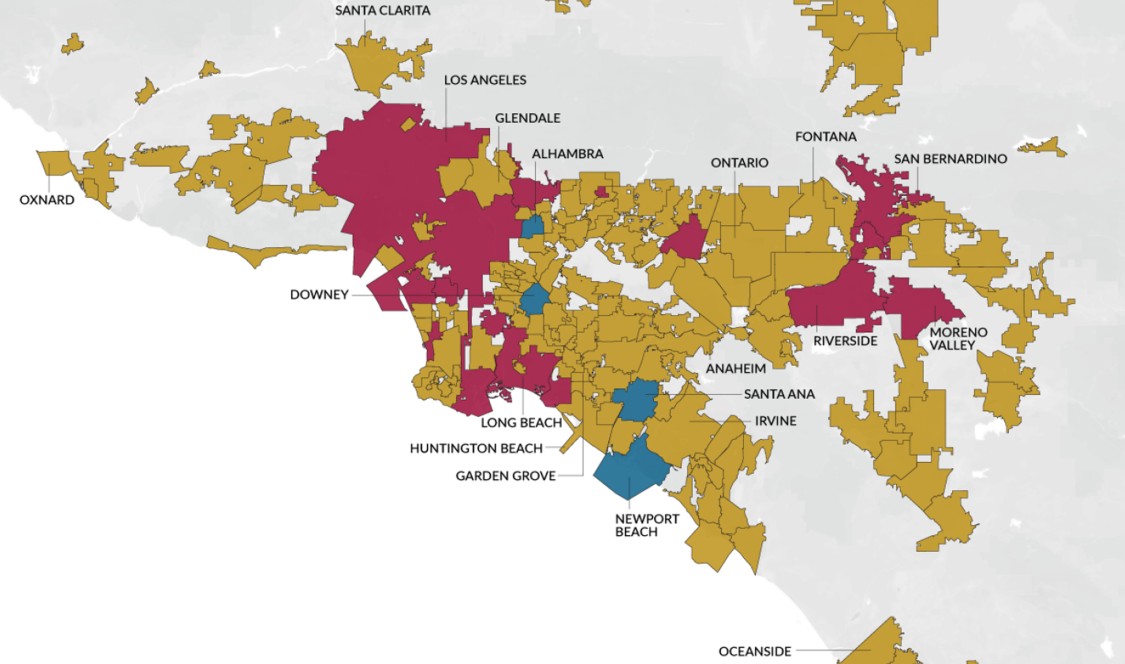California cities are rapidly shifting from at-large to district-based city council election systems, according to a report released by CMC’s Rose Institute of State and Local Government.
The report, Mapping the Revolution in California City Council Election Systems, revised and updated April 30, 2025, shows how this shift has been driven by the California Voting Rights Act of 2002 (CVRA). That law empowered Latinos and other minority groups to challenge at-large election systems that may dilute their voting strength. Prior to the adoption of the CVRA, only 36 cities in California (7.6%) used some form of district-based elections; now 229 of the state’s 483 incorporated cities (47.4%) do.
The CVRA has sparked legal challenges that have prompted cities to adopt by-district election systems. Some cities have been forced to make the change after losing lawsuits, while many others have preemptively switched to avoid litigation. Notably, no city has ever won a CVRA lawsuit.
This trend toward district-based elections has accelerated, with the number of California cities adopting district elections more than tripling between 2016 and 2024.
“It took some time for the CVRA to kick in, but it has now fundamentally changed local elections in California as nearly half the cities in the state have adopted district-based systems,” said Professor Ken Miller, Rose Institute Director.
The report explores the geographic and demographic patterns of this shift, revealing that larger cities are more likely to adopt district-based systems. For instance, all of California’s 22 very large cities (population over 200,000) and nearly 80% of large cities (population 75,001-200,000) now use some form of district-based elections. By contrast, smaller cities have been slower to make the transition, with only 24.8% of cities with populations under 35,000 adopting district elections.
The report does not evaluate the impact of district-based elections on governance or political representation but provides a detailed, data-driven look at the pace and distribution of these electoral changes.
The report was co-authored by Rose Institute students Pieter van Wingerden ’24 and Aria Fafat ’27.
To access the full report, visit www.roseinstitute.org.

